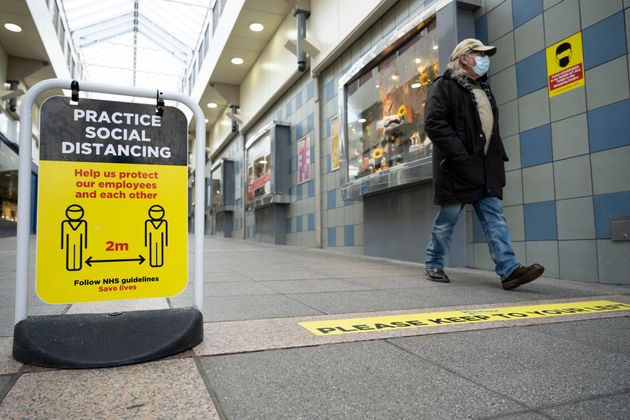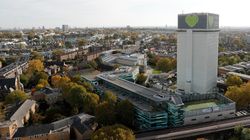I was in Singapore for its circuit breaker. The island has suffered just 28 fatalities, and on October 23 there were no new cases of locally transmitted Covid-19 infection.
So what can we learn from the Singaporean experience? Put blunty: there is simply no way that a two or three-week lockdown will work in England. Not now, not with the level of infection that we currently have in parts of the country.
Strict restrictions would have to stay in place for far longer here or we could find ourselves in a nightmare cycle of going in and out of lockdown until science swoops in to rescue us with an effective vaccine or therapeutic drug.
Even in Singapore, where the virus had been so successfully contained until the government encouraged Singaporean residents to return home, two weeks was not enough. And that’s despite daily government figures showing they only averaged 80 new cases per day in the week preceding the circuit breaker.
It doesn’t take a genius to see that by comparison, the situation in the UK is dire. On Wednesday, October 21, 7,706 patients with Covid-19 were reported to have been in hospital across the UK. On October 27, that figure was much higher at 10,308.
Twice this week the UK’s Covid-19 death toll topped 300, with 310 deaths recorded on October 28 and 367 recorded on October 27 – the highest figure since May 28.
Professor Sir Ian Diamond, Head of ONS, said there is “no question we are in a second wave and infections are rising very quickly. Rates of increase may slow slightly but are still at a very high level, which needs to come down.”

We cannot have Boris Johnson blunder his way through this again, telling everyone to eat out to help out, and then appearing surprised when the virus’ ugly head reemerges with a vengeance.
Chief Medical Officer Professor Chris Whitty warned us months ago we were at the limit of what could be reopened safely, yet commentators scoffed that he was exaggerating. He predicted we would have over 200 daily deaths by November. He told us tough choices would be needed before schools and universities could reopen.
Those tough choices weren’t made. And now the situation has spiralled out of control again, entirely predictably.
However hard it would be on the nation’s morale, it’s time for another lockdown – and the time gained must be used effectively to give our failing test and trace system a massive overhaul.
Singapore used its lockdown to build an even better test and trace system, including “SafeEntry” where you have to scan a unique barcode and give ID details on entry to every single shop, restaurant, bus and taxi.
Off the back of its success, Singapore is preparing its move into phase three of relaxing restrictions, where larger gatherings will be allowed under very strict conditions, with pre-event testing, trialling a new, rapid antigen test.
But to this day, higher risk settings like bars, pubs, karaoke lounges, nightclubs and others remain closed, as their activities pose a higher risk of transmission.
But make no mistake, if Boris Johnson plucks up the courage to enter us into another lockdown, it won’t be for two or three weeks. Strict measures will be needed for far longer, as in Singapore and Israel.
But don’t take my word for it.
Professor Li Yang Hsu, Head of Infectious Diseases Programme at Saw Swee Hock School of Public Health, National University of Singapore, told me the success of a short national lockdown here would depend on two factors.
Firstly, how effectively it is complied with or enforced. And secondly, what happens during and after in terms of societal restrictions.
“Optimistically, assuming the lockdown is as effective as the one imposed in UK in March in terms of reducing transmission of the virus, one would expect to see a slowdown in the rise of new cases after just over a week, and a reduction in deaths perhaps after a month or so, as deaths lag behind new cases,” he said.
“Our situation in Singapore remains good because we have not gone back to the pre-COVID normal.”
The unavoidable reality is that in the UK, just as in Singapore and Israel, where they’ve just started to slowly ease out of a second shorter lockdown, most of the cases arise from persons coming into close contact with an infected individual in social, workplace and family settings.
Unfortunately for us all, that means socialising has to be restricted.
We’ve come this far, we must not now turn our backs on those who have lost loved ones or who remain vulnerable to the disease.
This virus may not be a visible enemy in the way that bombs are, but it is a highly efficient killer. If we want to defeat it, then tougher measures will be needed.
Melissa Jacobs is a freelance journalist with a background in biological sciences.
Got a unique opinion on a news story that will help cut through the noise? We want to hear from you. Find out what we’re looking for here and pitch us on ukopinion@huffpost.com.



